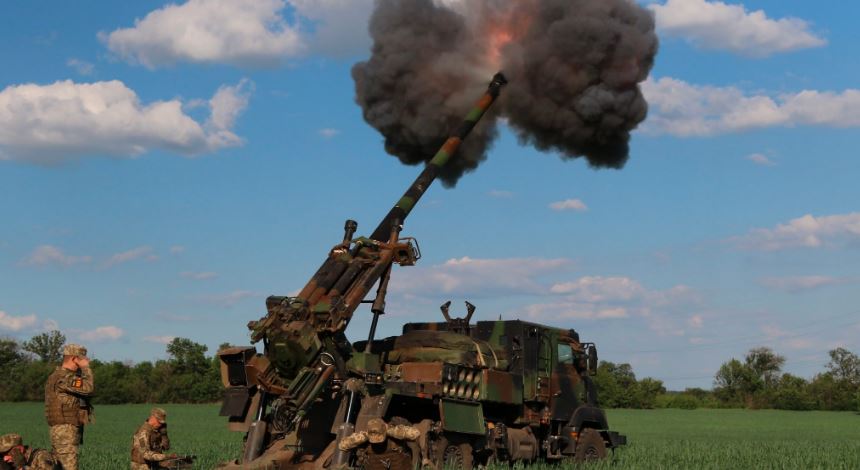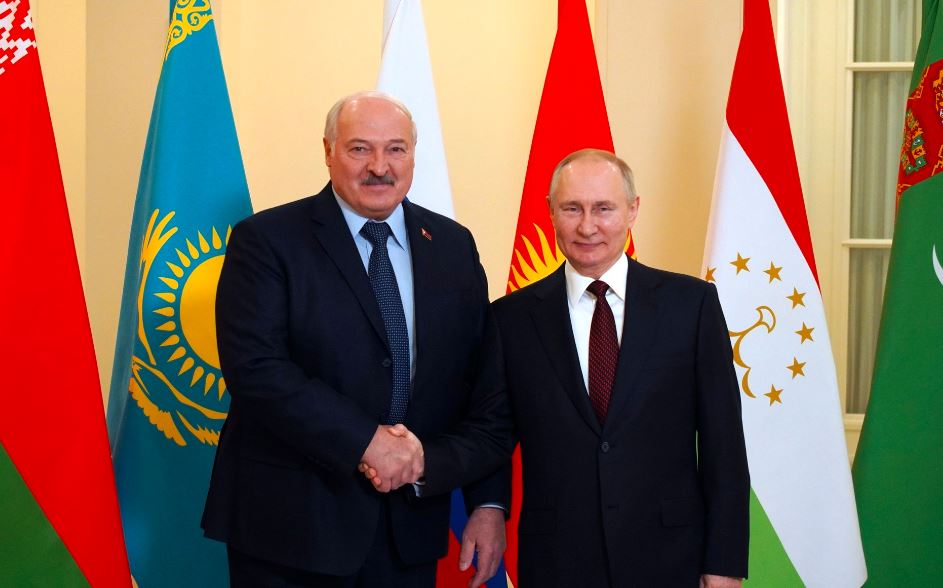Russia had suffered a defeat in north Ukraine and has failed to live up to its claim to be the world's second most powerful army, but it holds territory in Ukraine's east and south and is slowly gaining ground in Donbas. Will Ukraine win the war? Here are a few factors to consider.
Western weapons are tipping the scales on the battlefield
The Russia-Ukraine war is approaching a turning point that will influence the war’s future course. On 24 February, Russia launched a full-scale invasion of Ukraine in 9 different directions. During the first days of the war, Russian troops managed to occupy almost the entirety of the Kherson Oblast and large parts of the Zaporizhzhia and Kharkiv oblasts, advance in the Donetsk and Luhansk oblasts, capture Snake (Zmiinyi) Island, and launch a large-scale offensive against Kyiv. Initially, Putin intended to use classic blitzkrieg tactics to seize maximum Ukrainian territory quickly. During the hostilities, however, the true capabilities of the Russian army were revealed. The blitzkrieg strategy failed largely due to the excessive dispersion of Russian troops, which led to unprecedented casualties among Russian military personnel. Coupled with poor training, the massive personnel and territorial losses of the Russian army have dispelled the myth that they possess the second-strongest military in the world. Russia overestimated its Armed Forces’ combat capability, leading to their military defeat near Kyiv within the first month of the current war, forcing them into defensive positions. In over four months of the war, the only notable Russian victories are the capture of parts of the Kherson Oblast and the seizure of almost the entirety of the Luhansk Oblast, including territory that remained under Ukrainian control after 2014. Ukraine, however, has firmly resisted Russian attacks while protecting its forces and maintaining its fighting capacity. Moreover, the delivery of foreign weaponry stands to help Ukraine; upon receipt of Western high-precision artillery, Ukrainian soldiers have destroyed more than 20 Russian ammunition depots and have liberated several important municipalities in the Kherson Oblast. Two crucial components are also present in this complicated equation: Belarus and Snake (Zmiinyi) Island. Let’s figure out in whose favor the scales will be tipped in this war.The “battle of paces” has begun
Following the Russian withdrawal from Kyiv and northeastern Ukraine, Russia conceded its goal of occupying the entire Ukrainian territory. Presently, Russian forces aim to fully occupy Luhansk and Donetsk oblasts, maintain a land corridor from these regions to Crimea, and preserve control of Nova Kakhovka in the Kherson Oblast, a key city for ensuring water supply to occupied Crimea. Meanwhile, Ukraine has successfully resisted Russian attacks and has since been rearmed with Western weapons. A “battle of paces” has begun, meaning that the pace of military aid supplied to Ukraine from the West is in direct competition with the pace the Russian military can resupply and update their resources. The sooner modern western weapons arrive in Ukraine, the sooner the war will reach its turning point, and Ukraine will be able to initiate a strong counter-offensive against Russia.Russian commanders understand the nature of this “battle of paces” and consequently concentrate their current efforts on key positions and locations that will be easy to defend once this turning point is reached. After storming Sievierodonetsk, Russian troops are trying to launch attacks on Sloviansk and Bakhmut while they still maintain offensive potential. During this time, Ukrainian military engineers have constructed strong defense systems, and the Ukrainian military is planning offensive maneuvers involving western weapons.Ukraine's counter-offensive potential will increase immediately when western MLRS reach the battlefield. Requests of 300 MLRS are quite realistic: Ukraine can get them if each NATO member & partner gives 4 units, says military expert Oleksandr Kovalenkohttps://t.co/8IDyBVUIrp
— Euromaidan Press (@EuromaidanPress) June 23, 2022
Lukashenka will avoid direct involvement until his hand is forced
The role Belarus plays in the Russia-Ukraine war is complex. Since the beginning of the war, there have been many concerns that Belarus will directly join the war in support of Russia. Let’s take a look at the Belarussian factor in this equation. Since the very beginning of the full-scale Russian invasion, expert disputes have occurred over whether Belarus will directly join in on the war. Though not actively involved in combat, Minsk has supported Moscow in the war since the beginning of the invasion. First, it allowed Russia to deploy its military through Belarusian territory into Ukraine to attack Kyiv and Chernihiv. Presently Russian military aircraft are positioned in Belarusian airfields. Minsk has provided armored vehicles for Russia to use in the invasion, and many Belarusian mercenaries are fighting through private Russian military companies. Belarus plays another role in support of Russia: the Belarusian military is active along the Belarus-Ukraine border, forcing Ukraine to maintain a troop presence there. This prevents Ukraine from deploying all of its troops to combat zones with Russia. A clear pattern is that when the Ukrainian army successfully counter-attacks or inflicts heavy losses upon Russia, the military activity along the Belarussian-Ukrainian border increases.Ukraine warns Lukashenka may join war as Belarus partisans sabotage rail connectionsHowever, Belarus has not yet formally joined the war in Ukraine. Belarusian leader Lukashenka likely realises that the smaller Belarusian army will face a crushing defeat based on the scale of Russian army losses in Ukraine. Despite Lukashenka’s claims of total control in Belarus, he is not considered a legitimate leader, having sustained his presidency through falsified elections that prompted large-scale protests in 2020. Should Belarus suffer losses in Ukraine, domestic opposition to Lukashenka may peak again, threatening Lukashenka’s presidency. Moreover, while the Belarusian military conducts training and exercises, these appear to be a matter of 'muscle flexing' to appease Putin rather than actual combat preparations. Though it is impossible to predict Belarus’ military plans fully, it is highly likely that Lukashenka will avoid deploying Belarusian troops until he is forced.
Ukrainian quality over Russian quantity: the decisive battle of Donbas has begun
Presently the battles in Donbas are the central theater of the Russia-Ukraine war. From the onset, Russia has had a clear advantage in resources: there are three-four times more Russian troops than Ukrainian troops, and Russia has five times more armored vehicles and ten times more artillery than Ukraine. These numerical advantages are likely why Russia initially expected to occupy Ukraine easily. But instead, the Ukrainian army has resourcefully used its tactical training, modern anti-tank equipment, and geographical familiarity within the region to thwart Russian advances. The clearest example of Ukrainian resourcefulness is the case of the Siverskyi Donets River, a natural barrier the Russians had to cross to advance further West. Ukrainian soldiers used artillery to destroy all river crossings and stall the Russians until the first shipments of American M777 Howitzers and French CEASARs arrived in Ukraine. Western artillery is superior to the outdated Soviet artillery both Ukraine, and Russia previously used against each other, rendering Russia’s numerical advantages less significant.Russian troops suffer epic fail while attempting to cross river at BilohorivkaWhen Russian troops failed to cross the river, they applied Soviet military strategies to advance in the Luhansk Oblast, arbitrarily shelling Ukraine and destroying as much as possible. Due to their Soviet strategy of arbitrary shelling, the Russian military had to contend with experienced Ukrainian soldiers and their own artillery, which had at times bombed their own troops. The first city on their advance was Sievierodonetsk. However, the Ukrainian army applied strategy here, allowing the Russians to occupy half of Sievierodonetsk and then engaging Russian troops in urban warfare, a style of combat in which Russia has historically struggled. As a result, the Ukrainian focus has been on strategy, preventing tactical mistakes, and focusing on the preservation of their soldiers’ lives while optimizing losses of Russian military equipment and personnel. The Ukrainian decision to engage Russia in urban warfare in Sievierodonetsk forced Russian troops to concentrate in Sievierodonetsk and Lysychansk, allowing Ukrainian military leadership to stabilize other equally important locations on the front line. While Russians were focused on these street battles, Ukraine was able to further prepare defensive positions along the line through Bakhmut, Konstiantynivka, Kramatorsk, Sloviansk, and Barvinkove. This is the region where the most decisive battles of this stage of the war will occur. The artillery advantage is continuing to evolve in Ukraine’s favor. Another shipment of the High Mobility Artillery Rocket System HIMARS has been delivered from the United States and has already been used to destroy at least 20 Russian ammunition depots in the last week. This creates a significant problem for Russia as they now lack the suitable infrastructure to store the shells they use to bomb Ukraine indiscriminately.
Even if Russia could construct new storage, which would be a lengthy and complicated process, Ukraine’s HIMARS would still have the capability to destroy everything within an 80-km range, making future storage vulnerable to attack. While Russia can create more ammunition storage outside the 80-km range, the time and logistics necessary to deliver shells to their artillery units would increase significantly with such a distance. This will decrease the intensity of Russian artillery fire. The Ukrainian army has also initiated a counter-offensive in the Kherson Oblast. Recently the Armed Forces of Ukraine liberated Ivanivka, a strategically important town here. The return of Ivanivka to Ukrainian control undermined Russian plans to hold their positions in this direction as it provides a convenient springboard for further advances into Kherson. Russia was forced to redeploy its reserves from the Zaporizhzhia Oblast in response. The absence of Russian troops there allowed the Ukrainian military to push Russians back in the Vasylivka and Vuhledar regions.One more Russian ammunition depot was destroyed "in a village in the south." https://t.co/4gONE4yL6y
— Euromaidan Press (@EuromaidanPress) July 17, 2022
Serhiy Khlan, a member of the Kherson Oblast council also said the Russian ammunition depot and barracks created in Chaika soviet sanatorium exploded last night. pic.twitter.com/TPkXdTydxR
Ukraine starts hitting ammunition depots deep in Russia’s rear
Bullseye: Moskva burns as the myth of Russian Navy superiority debunked
Though the Russian Navy is considerably larger than the Ukraines, Ukraine has been highly successful in its sea attacks. The maritime component of the war is significant because Russia’s blockade of Ukrainian Black Sea ports prevents the export of food, especially grain, from Ukraine. As Ukraine is one of the top food producers globally, the war risks an international food crisis that could impact many countries, especially in Africa and Asia. Ukraine has launched many successful targeted attacks on the Russian Navy despite the assumption that they would control the Black Sea. First, Ukrainian missile forces destroyed the “Moskva” missile cruiser, which was formerly the flagship of the Russian Black Sea Fleet. The Ukrainian Armed Forces later hit drilling platforms in Chornomornaftogaz in the northwest region of the Black Sea, eliminating 120 personnel, including 90 Russian military personnel. The Russian Armed Forces had used these drilling platforms to monitor the Black Sea and the coastline. At the end of June, the Ukrainian Navy launched multiple attacks on Snake (Zmiinyi) Island, which Russians had captured in February. After suffering heavy losses, the Russians hastily evacuated the remainder of their garrison with two speedboats. Though they publicized their retreat as a “gesture of goodwill” to minimize the risk of a global food crisis, they were clearly defeated. The Russian Navy does not currently venture far beyond Crimea due to the threat of attack from Ukrainian missiles. This has exposed the weakness of the Russian Navy and again revealed the discrepancies between Russian claims of combat readiness and their military performance.What Ukraine’s liberation of strategic Zmiinyi (Snake) Island means for the war
Putin doesn't know when to quit, fearing international shame
Based on the current battles in Donbas and the Black Sea combined with the delivery of weapons from the West to Ukraine, it is clear that the war is about to reach a bifurcation point. However, the ultimate results will depend on each army's resources and their respective abilities to conduct military operations. Despite the Russian superiority in artillery, personnel, and armored vehicles, Russia has failed to achieve any of its goals, and the war is becoming increasingly difficult for Russia through a shortage of trained military personnel. Beyond military losses, it is clear that Putin is concerned about Russia losing and the international shame that comes with it. The invasion of Ukraine has dragged Russia into the bloodiest conflict it has faced since 1945 and has caused unprecedented losses. To justify these losses and avoid admitting defeat, Putin and his supporters will likely continue to fight as long as resources are available. Putin has not yet abandoned his dream of capturing Ukraine and controlling it as a puppet of the Russian Federation. To accomplish this, the Russian military strategy includes limited advances, defending currently occupied territories, launching arbitrary rocket attacks to maximize destruction, and exploiting Belarus’ human and material resources. In addition, hybrid warfare, including air strikes on civilian targets and cyberwarfare, aim to create panic and demoralize Ukrainian citizens. The Ukrainian army has maintained its fighting capacity and has begun effective counter-offensive operations in the southern regions through careful strategy. This strong defense and the beginnings of the Ukrainian offensive movement continue to hinder the Russians from achieving their goals. However, for Ukraine to ultimately achieve victory against Russia and win the war, Ukraine needs more weapons from the West. Anatolii Shara is a Ukrainian freelance journalist and disinformation analyst.
Anatolii Shara is a Ukrainian freelance journalist and disinformation analyst.
 Anastasia Koberska is a Ukrainian expert in politics, writer, and independent journalist.
Anastasia Koberska is a Ukrainian expert in politics, writer, and independent journalist.
- Ukraine starts hitting ammunition depots deep in Russia’s rear
- Why long-range Western MLRS can become a game-changer for Ukraine
- Ukraine urgently needs Marshall plan and NATO presence on the Black Sea
- What Ukraine’s liberation of strategic Zmiinyi (Snake) Island means for the war
- The Kremlin’s playbook: fabricating pretext to invade Ukraine – more myths
- Ukraine warns Lukashenka may join war as Belarus partisans sabotage rail connections





